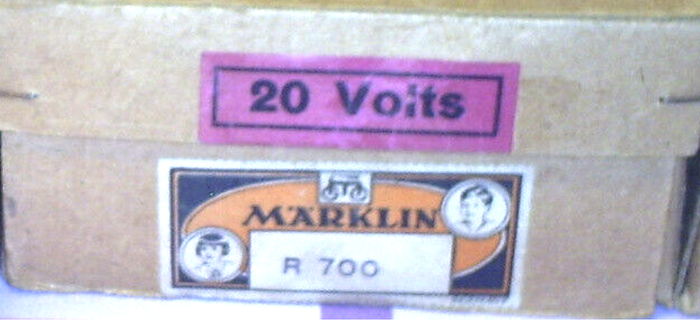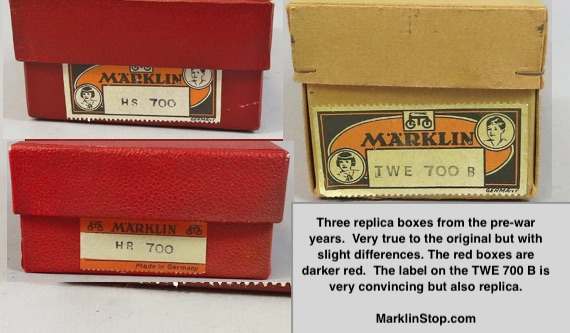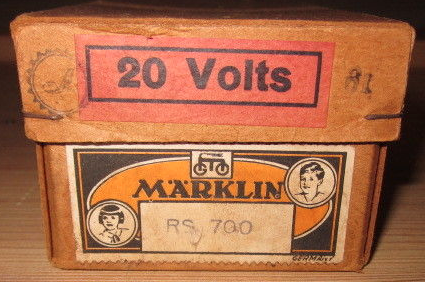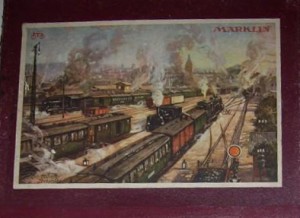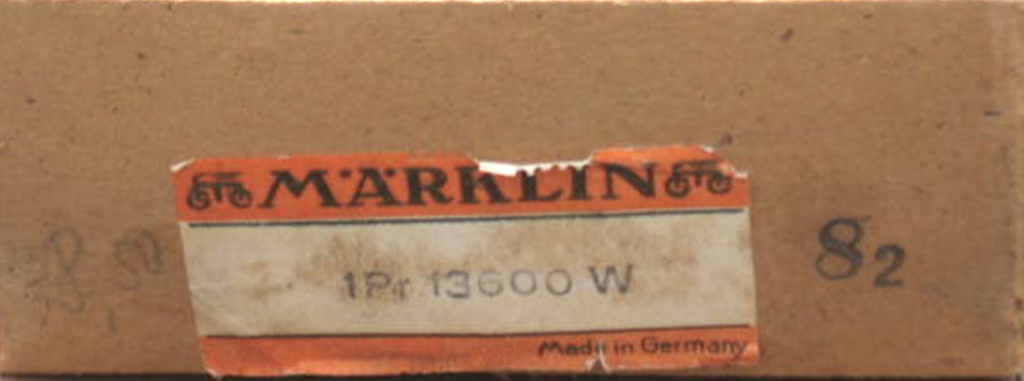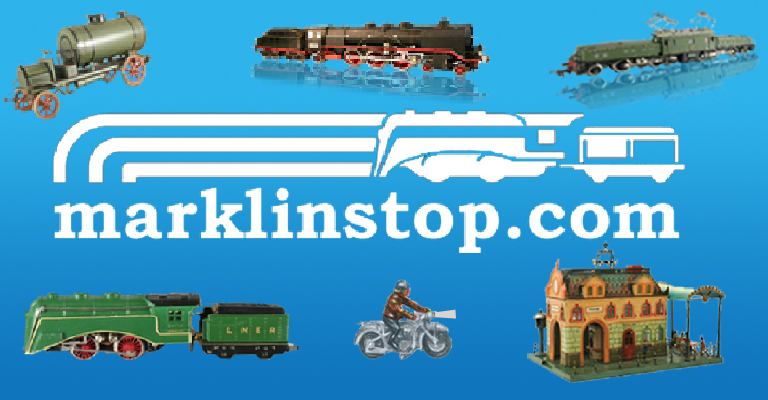Guide to Marklin 00/HO Boxes 1935 – 1943

As many collectors know, original boxes for Marklin toys and trains can significantly increase the value of their treasured contents. In their original use, boxes and sometimes wooden crates were merely meant to safely transport their contents. But today, boxes provide collectors with a better look at where the toys came from and add to the piece’s provenance and overall charm.
The range of Scale 00/HO Marklin boxes has changed drastically over the years. Boxes can be very helpful in dating toys and add considerably to the overall value of a train set or individual train. Collectors are willing to pay higher prices if the original box is included. In this guide we’ll review some of the common box styles, what periods they were produced, and the different characteristics of each. We’ll be careful to note for each box style how they compare to reproduction boxes and how to spot them.
1935 – 1936
The earliest 00 Scale box was similar in design to previous Marklin boxes for larger scales: it had a black and orange label on a plain brown box. This box was used from 1935 to 1936, but sometimes we even see it in early 1937. Characteristics that differ with this early box is that the perforation on the top and bottom of the label extends all the way across the label edge in a uniform line. Later boxes have different perforation patterns including some labels that only have a few perforation holes in the center of the label. Postage stamp collectors will easily notice that this perforation is called the “pin hole” technique and actually punches a whole for the paper. It’s not clear why Marklin used this technique on it’s labels as the labels certainly were not torn but rather cut along the perforation line.
The earliest of 00/HO boxes have other characteristics reminiscent of boxes of large-gauge Marklin items from a similar time. For instance, some early 700 series locomotives were packed with straw hay for extra padding during transport. This straw was often inside brown paper to protect the paint from damage. As many collectors know, however, this paper often stuck to the lacquer of the Marklin locomotives if it hadn’t completely dried or if the piece was stored in an area with slight heat that would make the lacquer “sticky.”
Although we don’t have a date stamp on this box below, we are fairly certain it is from 1935 because it contained a first version R 700. It’s very possible, though, that this box was actually from 1936 production.
Reproduction boxes are very common from this early period as well. They can be very convincing but by studying small differences and the stamps we can easily spot replicas. Certain stamps like “K” “CH” and “U” are used on reproduction boxes, but were never used on certain original boxes.
| BOX1 | BOX2 |
Early Set Boxes for 00/HO
Set boxes for Marklin train sets from 1935-36 were commonly found in a purple colored carton with an illustrated picture of a railway scene on the box top. The sets also had orange/white labels indicating the set number (example: R 727, or others listed here) and also the voltage label (20 VOLT).
The boxed sets had the orange “faces” label as seen below.
1937-1938
The next type of box had a orange and white label and a similar brown box that was lighter in color. This type of box was used from 1937 to 1938 but there was another kind of box also introduced in 1938 that will be discussed next.
1938
The year 1938 brought many changes to Marklin. The “Perfect Reverse” system was introduced as well as a change in design of boxes for the entire range of 00 Scale production. Marklin introduced their famous red-diamond or bicycle box (named because of the pattern of the red Marklin logo which looked like a bicycle). This type of box was used for the remained of our focus of discussion (up to 1956) but in many different variations. The type of box pictured below was used from 1938 to 1943. Locomotive boxes had an orange and white label and coaches and wagons had a plain white label.

